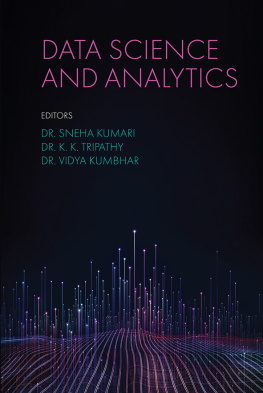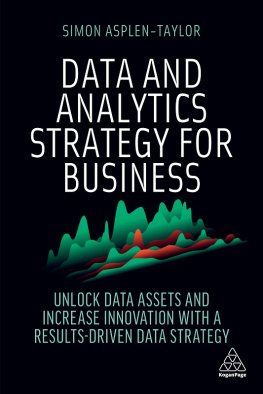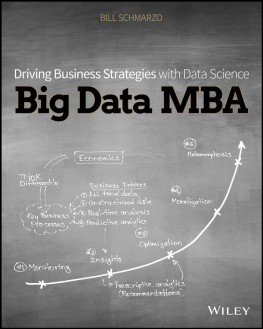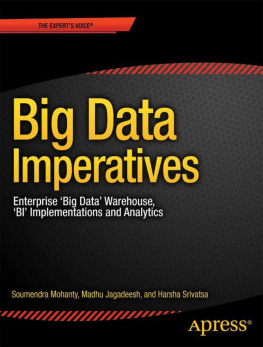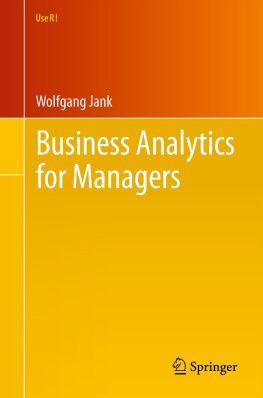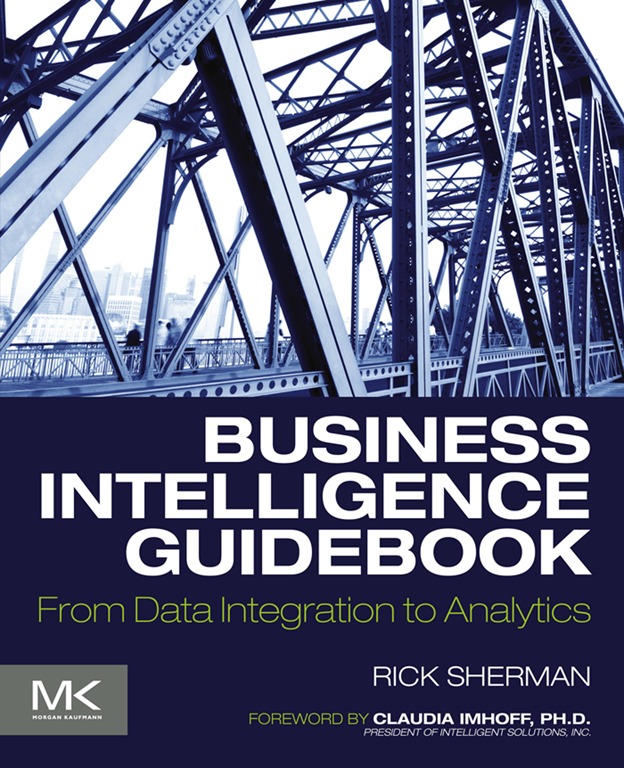Business Intelligence Guidebook
From Data Integration to Analytics
Table of Contents
Copyright
Acquiring Editor : Steve Elliot
Editorial Project Manager : Lindsay Lawrence
Project Manager: Punithavathy Govindaradjane
Designer: Matthew Limbert
Morgan Kaufmann is an imprint of Elsevier
225 Wyman Street, Waltham, MA, 02451, USA
Copyright 2015 Elsevier Inc. All rights reserved.
No part of this publication may be reproduced or transmitted in any form or by any means, electronic or mechanical, including photocopying, recording, or any information storage and retrieval system, without permission in writing from the publisher. Details on how to seek permission, further information about the Publishers permissions policies and our arrangements with organizations such as the Copyright Clearance Center and the Copyright Licensing Agency, can be found at our website: www.elsevier.com/permissions.
This book and the individual contributions contained in it are protected under copyright by the Publisher (other than as may be noted herein).
Notices
Knowledge and best practice in this field are constantly changing. As new research and experience broaden our understanding, changes in research methods, professional practices, or medical treatment may become necessary.
Practitioners and researchers must always rely on their own experience and knowledge in evaluating and using any information, methods, compounds, or experiments described herein. In using such information or methods they should be mindful of their own safety and the safety of others, including parties for whom they have a professional responsibility.
To the fullest extent of the law, neither the Publisher nor the authors, contributors, or editors, assume any liability for any injury and/or damage to persons or property as amatter of products liability, negligence or otherwise, or from any use or operation of any methods, products, instructions, or ideas contained in the material herein.
Library of Congress Cataloging-in-Publication Data
Sherman, Rick.
Business intelligence guidebook : from data integration to analytics/Rick Sherman.
pages cm
ISBN 978-0-12-411461-6
1. Business intelligence. I. Title.
HD38.7.S52 2014
658.472dc23
2014031205
British Library Cataloguing-in-Publication Data
A catalogue record for this book is available from the British Library.
ISBN: 978-0-12-411461-6
For information on all MK publications visit our website at www.mkp.com
Foreword
There are many books explaining the need for BI, its methodology, and the myriad designs and implementation pathways that can be taken. The missing book is one that covers all of these from start to finish in a complete, detailed, and comprehensive fashion. From justifying the project, gathering requirements, developing the architectural framework, designing the proper approach for BI data models, integrating the data, generating advanced analytics, dealing with shadow systems, understanding and dealing with organizational relationships, managing the full project life cycle, and finally creating centers of excellencethis book covers the entire gambit of creating a sustainable BI environment.
It is the one book you will need to create and maintain a world-class data warehouse environment. Ricks deep understanding of technical implementations is only matched by his understanding of the history behind many of the decision points in the development of the BI components. This history will help you determine the best deployment options for your specific situationso invaluable in todays confusing and mixed messages BI world!
I highly recommend this book to anyone just starting out in BI, who has a legacy environment that needs renovating or just wants to understand the entire implementation picture from start to finish. Ricks mastery of all the critical implementation activities means you are receiving the best advice for creating a world-class BI environment that will last for long haul. Nicely done, Rick.
Claudia Imhoff, President of Intelligent Solutions, Inc. and Founder of The Boulder Business Intelligence Brain Trust.
How to Use This Book
I wrote this book to fill in the gap between books that focus on the concepts of business intelligence (BI) and the nitty gritty of vendor tool training. It does not just provide a foundation, it shows you how to apply that foundation in order to actually get your work done. After this book, you should be ready to learn specific tools. As you do that, youll see how the concepts and the step-by-step instructions mesh together.
See www.BIguidebook.com for companion material such as templates, examples, vendor links, and updated research. There, you will be able to subscribe to an email list and receive notices of updates, additions, and other occasional news that relates to the book. I will also use my blog at www.datadoghouse.com to post updates.
If you are a professor choosing this book as a text book, contact us at for a syllabus.
Note : You may notice that this book does not use the word user any more than absolutely necessary. I explain my reasons in , but, briefly, it is because we are building BI solutions for people . This is an important mind-set, seeing as BI projects are about people as much as they are about technology.
For this book and other related titles, see the publishers website: http://booksite.elsevier.com/9780124114616.
Chapter Summaries
BI projects require the participation of both business and IT groups. The simplistic view is that business people are the customers and IT people deliver the solution. The reality is that business people need to participate in the entire process. Below you will find summaries and guidance on how business and IT people can use this book.
sets the stage, and is important background for all audiences. It explains how the deluge of data and its accompanying need for analysis makes BI critical for the success of todays enterprise. There is a big difference between raw data and actionable information. While there are attempts to circumvent BI with operational systems, there really is no good substitute for true BI.
helps the BI team make both the business and technical case to determine the need, identify the benefits, and, most importantly, set expectations. Identifying risks and an organizations readiness is critical to determining realistic expectations. This chapter covers determining the scope, plan, budget, and return on investment.
discusses the process of creating the foundation of a successful BI solution by documenting what you are planning to build. The development team then uses these requirements to design, develop, and deploy BI systems. This is one of the most people-oriented processes in a project, making it especially tricky. Use this chapter to understand the roles and workflow, and how to conduct the interviews that are the basis for the requirements you will be documenting.








